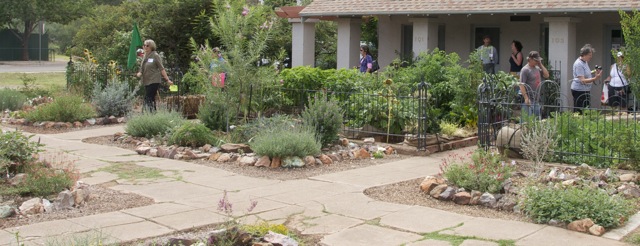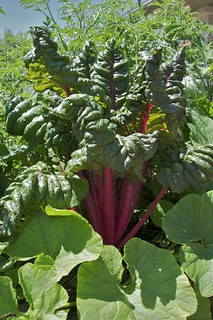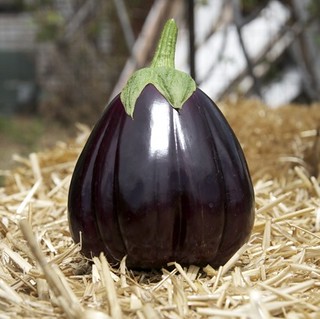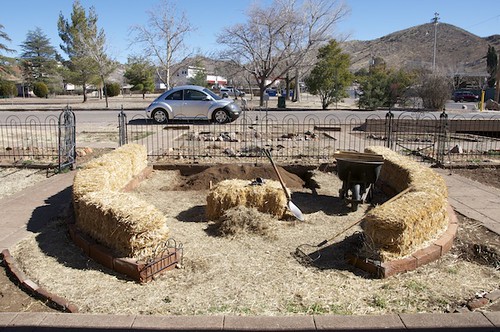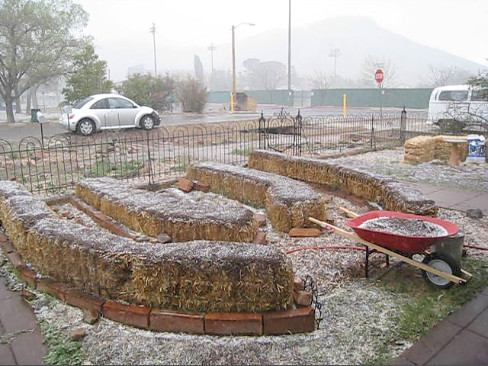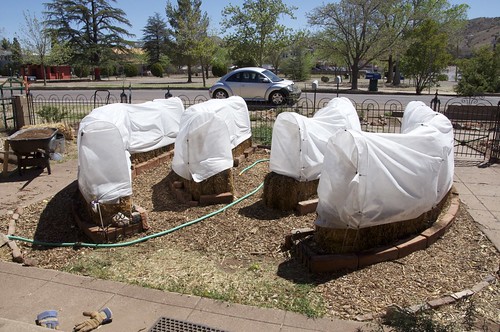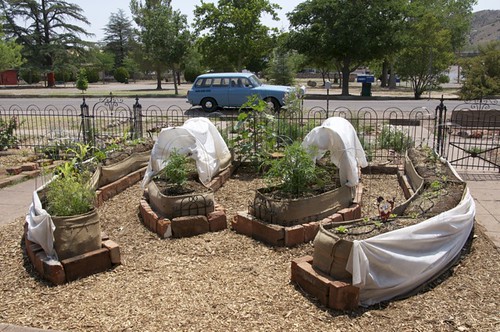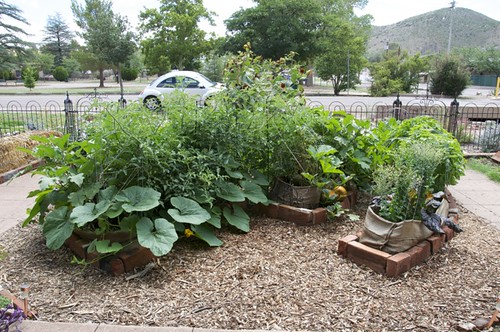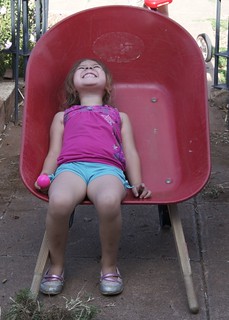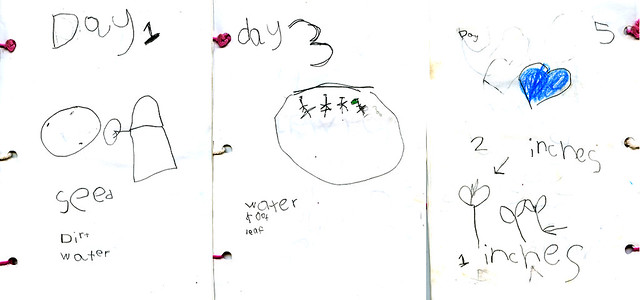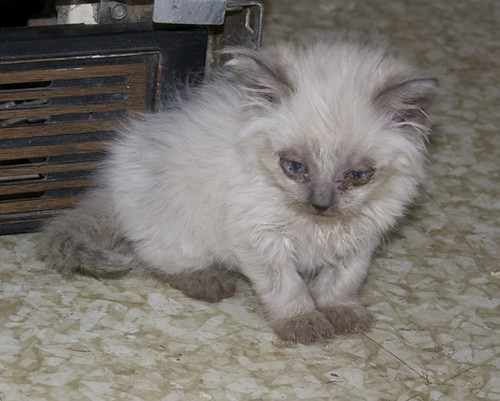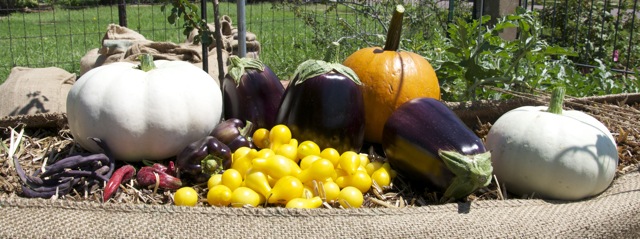 |
| 9 Aug 2012 |
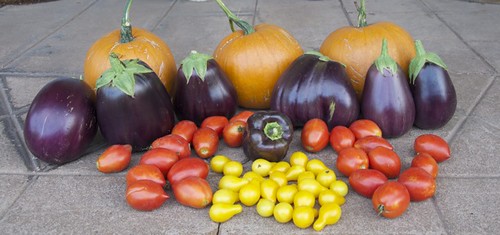 |
| 16 Aug 2012 |
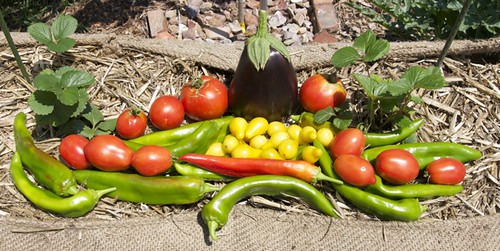 | |
| 20 Aug 2012 |
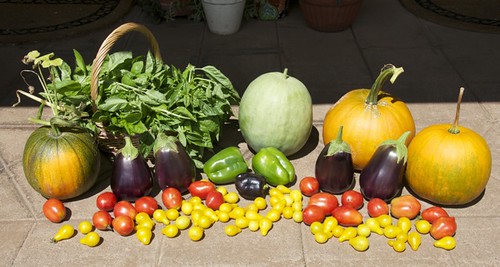 |
| 24 Aug 2012 |
 |
| Moose & Squirrel Pumpkin Pie |
Even with the lack of a controlled environment, I was able to preserve enough pumpkins to make several pies and loaves of bread in the late fall. The tougher skinned white pumpkins are still looking good in January. I added a better storage solution to my 2013 projects list in which I could set them on a rack and at least monitor, if not control, the temperature and humidity.
 |
| 13 Sep 2012 |
 |
| Yellow Tomato Jam |
I never would have guessed that I would find everything that I needed to get started at the local hardware store but that is how easy it was. My first project involved making use of the, what seemed to be in the number of hundreds, yellow pear tomatoes. My foodie friend and acting editor for this blog, found the most interesting recipe for tomato jam. The trick is to find recipes which call for what you have in your garden. My garden had the tomatoes, basil and the chili peppers required. The jam is delicious on a cracker spread with brie, chevre or cream cheese. It also served as a fun gift during the holiday season.
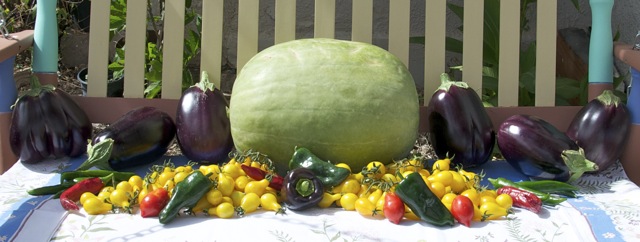 |
| 8 Oct 2012 |
In the process of learning ways to preserve my harvest I realized that I should be a little more serious about selecting the vegetables to grow so that they complement each other for the purpose of preparing meals or canning. I was experimenting this year but my plan, moving forward, is to use only what the garden produces with an exception for the ingredients that are not possible to grow in my limited space or geographical area. This experience has encouraged me to plant the onions, garlic and shallots this fall. I also know I can improve on my ability to coordinate the harvesting dates for the produce required to make a favorite dish.
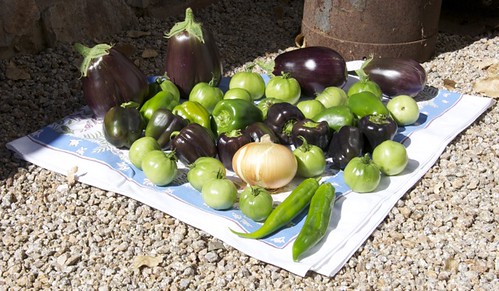 |
| 24 Oct 2012 |
I cannot express the pleasure I feel to be able to go outside and choose what I’m going to use for a meal. Even browsing through the kitchen cupboards has become a little more exciting. I love staring at all of the pretty colors in the jars of the canned food. Each bite of food grown in the garden has the full flavor and nutrition nature intended. The fears of pesticides, genetic modifications using viruses or fish genes, BHA, BHT, BPA and who knows what else are put aside.
 |
| 1 Nov 2012 |
The kitchen garden project is continuing to push me to expand my knowledge and add an even greater appreciation for the cost of food. Raising and processing food is a slow and energy consuming activity. As a consumer, I'm suspicious of ridiculously low cost food and I avoid it.
I'm getting the impression that the kitchen garden is becoming more popular at the elementary schools. Both the local elementary school and my granddaughter’s school in California have raised beds to grow vegetables. I commend the teachers who I suspect take on additional hours to make the experience possible.
Has Michelle Obama’s kitchen garden project had any national effect? I had hoped that President Obama’s administration would have ushered in more improvements toward our food system before now. I wonder sometimes what his wife thinks about the situation. Given the fact that the current First Lady is a terrific speaker, educated, intelligent, a mother, attractive and has the media’s attention, I think that she would be a perfect spokesperson for progressive changes. She proved herself to be a powerful motivational force when she stepped out on the campaign trail. If I had a minute of Michelle Obama’s time I would say, “Come on Michelle, your girls are getting older. You’re a mother who understands the basic need to provide nourishing food for your family. Shame the industry for using suspect chemicals and questionable technology on our food and in its packaging. The young, the old and everyone in between are suffering from the direction our food system has headed. You want to support your husband in his effort to keeping the costs of health care down, right? A shift in the values within our current food system could address climate change, farm worker safety, and health care costs. Push the idea that the farming subsidies need to move away from the Wall Street investor mega-farms and be redirected to support the local organic farmers who have an invested interest in their community. There is also an opportunity to address the plight of the invisible migrant workers who endure near slavery conditions. Frankly, we all resent being used like guinea pigs. We need a 21st century version of Eleanor Roosevelt.”
 |
| 28 Nov 2012 |
Happy New Year.
Additional Information & Recipes:
Plastic Free Times: Health News
GM Free Schools
Harvesting and Storing Pumpkins, Winter Squash, and Gourds
Theresa's Pickled Eggplant
Fried Eggplant – My grandfather’s recipe and family tradition.
Peel and slice one large eggplant to make rounds roughly ¼ inch thick. You will develop your own preference for thickness in time.
Dip each slice of eggplant in a shallow bowl with 2 beaten eggs then in another shallow bowl with about a cup of fine ground cornmeal loosely mixed with a handful of flour and flip over to cover both sides of the slice. I keep the cornmeal and flour handy in case I need more as I proceed.
Fry the slices until golden brown in very hot but not smoking light vegetable oil (note that the cornmeal will start to cause smoke after the first batch so use your overhead fan or crack a window). My current favorite vegetable oil is sunflower and I use an iron skillet for frying. I put enough oil to brown the sides of the slices. You will know when it is time to turn them over when the sizzling action mellows and the edges turn golden. Once you turn them over and the vigorous sizzling has subsided it is about time to remove them from the oil. I lift the slice with a fork high enough to allow the excess oil to pour back into the pan and place it on a paper towel with the hottest side facing up. Salt to taste. Layer with another 2 sheets of paper towels and fry another pan full. Repeat. Eat the fried eggplant the moment the temperature becomes safe to do so.
The History of the Yellow Pear Tomato
The Yellow Pear is known to have been cultivated in Europe as far back as the 17th century. Renowned biologist and taxonomist Christiaan Hendrik Persoon first recorded it in his Synopsis plantarum in 1805.
The variety spread to North American fairly quickly.
1825: The Hudson Bay Company at Fort Vancouver, though the headquarters of the Northwest fur trade, also operated a farm with vegetables, fruits, herbs, and flowers and sold Yellow Pear Tomatoes.
YELLOW PEAR TOMATO JAM
From The Big Book of Preserving the Harvest by Carol W. Costenbader.
4 c sugar
3/4 c water
6 c. yellow pear tomatoes
3 jalapeno chilies, seeded and finely chopped
3 T chopped fresh basil
3 T fresh lemon juice
2 T distilled white vinegar
- In a 6-quart saucepan combine the sugar and water. Bring to a boil over medium heat and simmer until the syrup reaches 234 F on a cooking thermometer.
- Remove from the heat and add the tomatoes, mixing well. The syrup may change consistency, but continue stirring and eventually the tomatoes will mix evenly.
- Return to the heat and add the chilies, basil, lemon juice, and vinegar. Simmer, uncovered, on very low heat until the mixture thickens, about 1 1/2 - 2 hours. Stir often, being careful not to burn. The jam will darken.
- Ladle into clean jars, leaving 1/4 inch of headspace. Cap and seal.
- Process for 15 minutes in a boiling water-bath canner.




